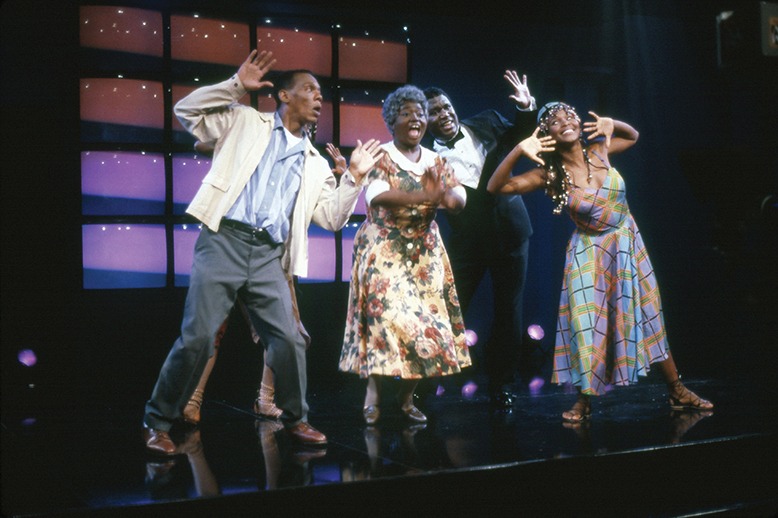
This sketch from The Colored Museum is a parody of A Raisin in the Sun. Courtesy of Nancy Levine
Contrary to the title’s implication, George C. Wolfe’s The Colored Museum is not a mere display of artifacts. Rather, the no-holds-barred, commanding satire exposes dark aspects of American history, celebrates Black culture and mocks stereotypes in 11 sketches or “exhibits.”
The 90-minute play premiered in 1986 on the Crossroads Theatre Company stage in New Brunswick. Company cofounders Ricardo Khan and the late Lee Kenneth Richardson (who died in May) produced and directed, respectively. The production helped launch Wolfe’s career as a Tony-winning playwright and director.
That same year, The Colored Museum moved to the Public Theater in New York City. A few years later, when asked to choose a production to record for WNET’s Great Performances series, Crossroads selected The Colored Museum without hesitation. Wolfe wrote the screenplay and codirected the broadcast version, which includes original cast members Danitra Vance and Vickilyn Reynolds.
This Black History Month, February 2–28, audiences can stream the 1991 broadcast production at crossroadstheatrecompany.org through the digital platform Home With Crossroads.
[RELATED: In Orange, Painting the Nation’s Largest ‘Black Lives Matter’ Mural]
“It’s a brilliant satire that allowed Crossroads to depart from naturalism in the way Black Americans are depicted,” says Khan. “It hits on something that continues to be biting and funny and entertaining.”
Throughout the production, witty lines coexist with dead-serious moments. In one sketch, a perky stewardess aboard the Celebrity Slaveship instructs passengers to fasten their shackles. In a lighter bit, two wigs argue about which hairpiece their owner will wear. And in a profound vignette, a businessman attempts to shed his Black identity by discarding items like a dashiki, an Afro-comb and a Jackson 5 record.
Created more than 30 years ago, The Colored Museum’s message still resonates today.
“[Wolfe] wanted to take glimpses of who we are and set them in a museum so that they could be honored,” says Khan, “but those things are still out there walking around. I think we’re all finding today—people of all backgrounds and colors—that we need to continue to take the serious and honest looks at ourselves and each other if we’re going to go forward.”



